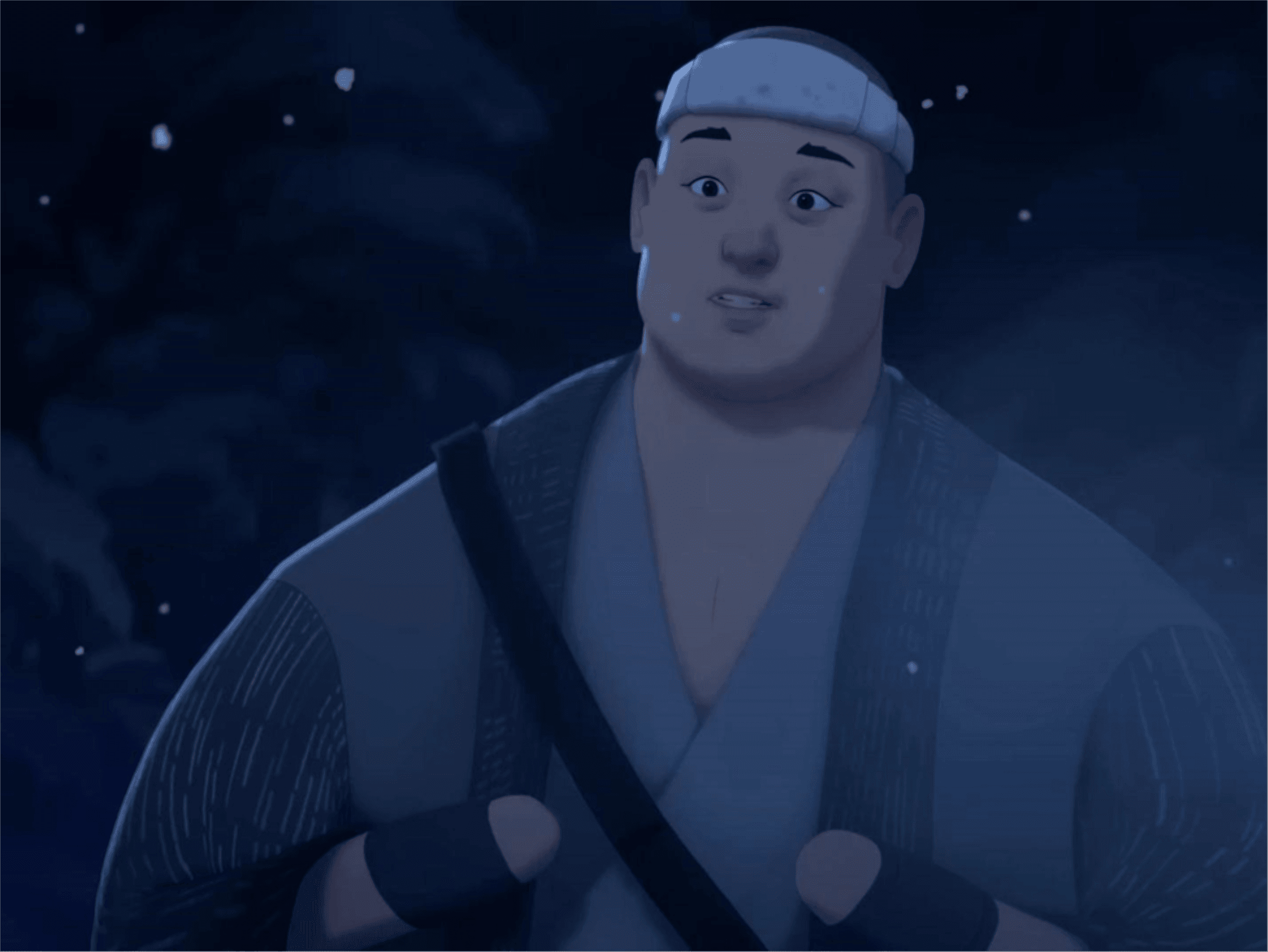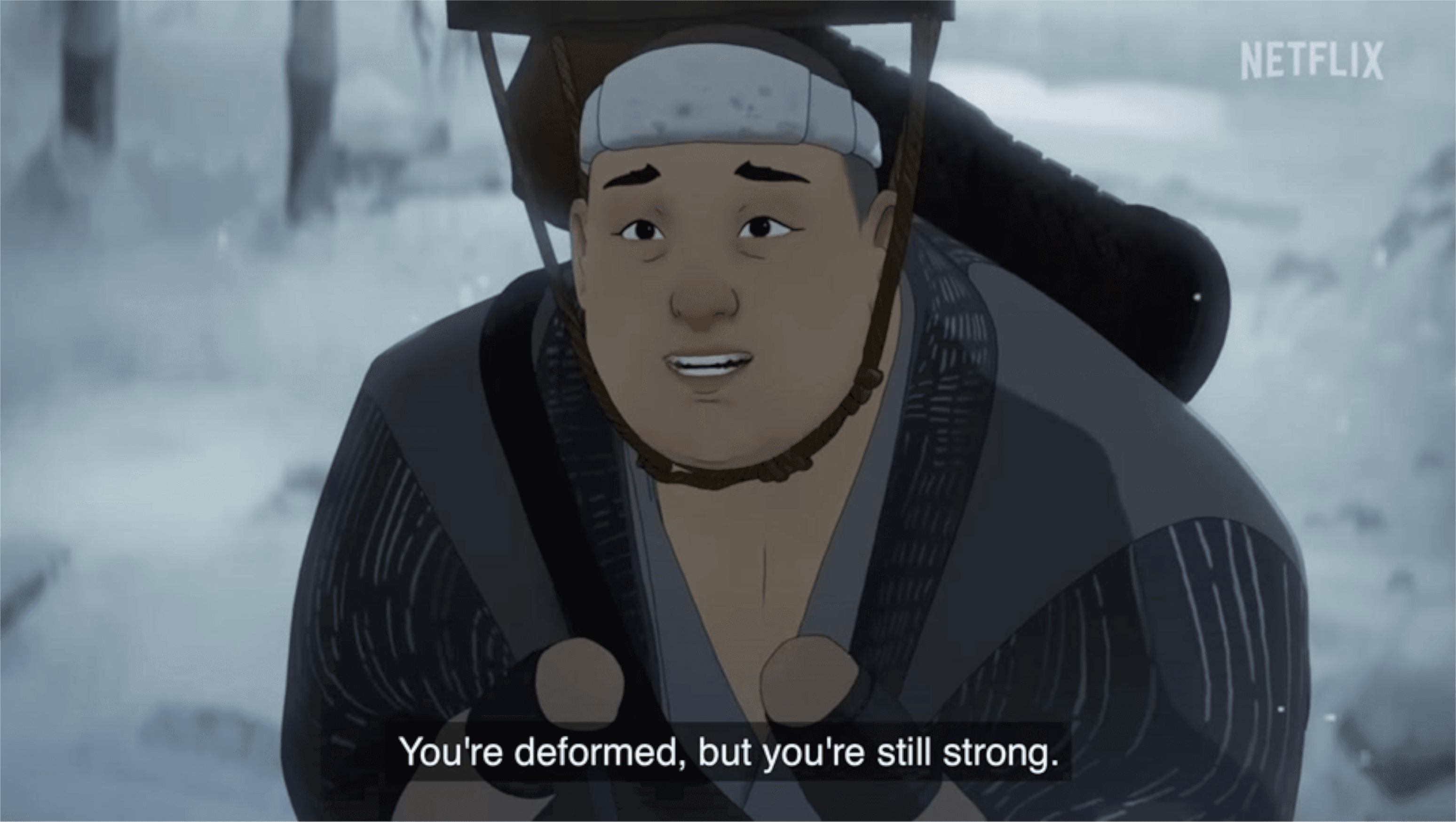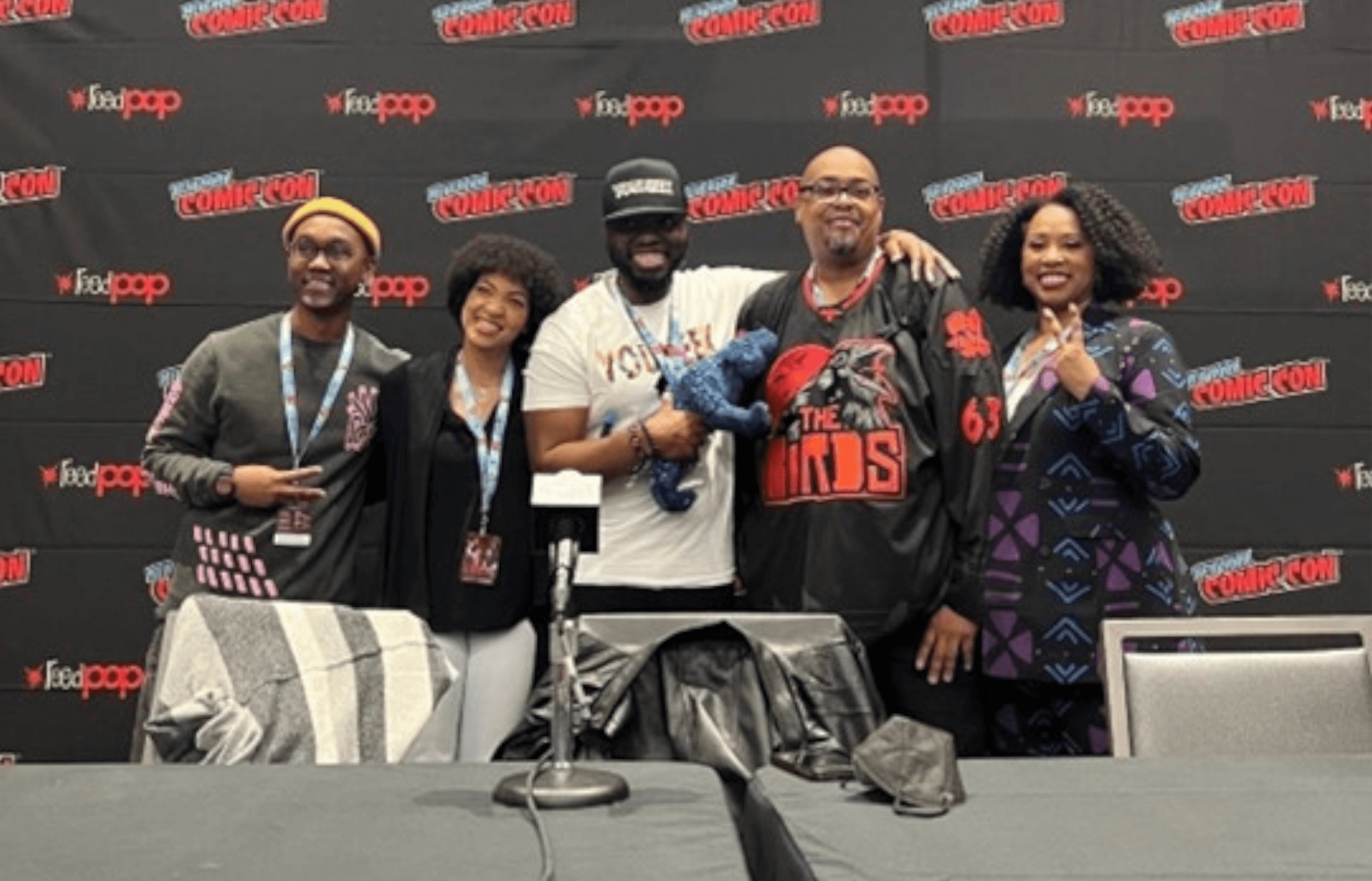
Among Netflix’s popular releases this past year was Blue Eye Samurai, a show that created social buzz across the anime community, and for good reason! Released in November 2023, this story is a daunting tale of wrath, agony, discrimination amongst society, and most prevalent - revenge. Our main character, Mizu, is born into 17th century Japan, where all foreigners are barred from entering the country. Mizu’s bitter fate was sealed from birth as she is the creation of a Japanese woman and white man - and she must hide to stay alive. Blue Eye Samurai addresses many nuances in race, gender, class, ableism, while taking us along a heart-wrenching story of courage and determination to gain revenge against a common enemy.
As many great shows do, you could see the intentionality that went into the creation of this anime. Many tales tell the romanticized version of Edo period Japan in the show’s 1657 setting but leave out the nitty-gritty bits of a time where samurais and prostitution were legal occupations. Blue Eye Samurai has a way of fore-fronting these through Mizu, along with her existence as an ‘Other’ because of her whiteness. Showrunners, executive producers, and partners Amber Noizumi and Michael Green touch on the ideas relating to this show and how the series formed into an experimental animation. Noizumi, a half-Japanese half-Caucasian woman herself, drew inspiration from her own experiences for Mizu; “For me personally, it was a lot about growing up mixed-race and that feeling of not belonging, not being white, not being Japanese, that seeking wholeness.” In the same interview, Green comments, “the historical moment created the conditions of a character’s life where her closeness to whiteness became a social liability unlike any other time.” Not only would Mizu’s race cause for further conversation outside of the show, but Blue Eye Samurai also addresses issues other characters face in this society, featuring a diversity lacking in plenty of competing media to this day.
Blue Eye Samurai uses other characters such as Ringo, Princess Akemi, and Taigen to comment further on the social extremities of the time - while Ringo and Taigen’s tales intertwine closely with Mizu, Akemi follows her own story in season one convincing me further of the show’s intentionality with portraying a story of multiple perspectives. Ringo’s character is woven closely to Mizu, as two characters considered “disabled” due to their handicap. Princess Akemi opposes Mizu in several ways, but the two share ambitions of achieving more than expected of women in this society. The show addresses various “isms” one by one, peeling back its curtains to reveal a gut-wrenching show.

Ringo, a noodle-chef who deals with treatment in Japan as a man with no hands.
Aside from the story, the show’s animation had a huge play on what drew people to the show (pun intended). Jane Wu, well known for her storyboarding in Spider-Man: Into The Spiderverse (2023), Mulan (2020), and a handful of Marvel Studios movies, took on a producing role in this Netflix animation. Wu would lead the staff through martial-arts exercises and traditional japanese mannerisms to further their understanding before moving forth in the project. It was very interesting how they’d also model the show’s famous battles after choreographed fights, which made for easier build of the animation.

From left to right: Jane Wu, Amber Noizumi and Michael Green at Animation is Film Festival 2023 Photo Credit, John Salangsang for AIF
Surprisingly, Blue Eye Samurai is not an anime! When Wu started thinking about the visuals, she knew she couldn’t do an anime. “Not because I’m not a fan, but because there’s been such great samurai animation out there that I was just going to get lost in that voice and I couldn’t do better,” [Wu] said…the visual language of the show is really drawn from Japanese art. The inspiration for design came to Wu from bunraku puppets, japanese-traditional dolls used in plays and performances retelling stories throughout history. Wu had been watching these performances since childhood so these beautiful yet haunting puppets would be the start of the artistry that is this show.
The Legend of Mizu
Mizu’s character grapples with many intersecting identities. Being mixed-raced is a feature difficult to hide, but she conceals her gender as she completes her vow to kill the white men present in Japan at the time of her birth. This is an odd mix to comprehend at the beginning of the series - I found myself wondering if her vengeance was a deep sense of self-hatred or empathy for the agony this put her mother through. Nonetheless, it becomes clear as the show continues that a blend of experiences guide her unrelenting decision to kill the men responsible for her existence.
In this era, Mizu’s existence comes with the worst kinds of abuse. The story writers do an amazing job connecting us to Mizu’s pain growing up. They sprinkle flashbacks into each episode, working through Mizu’s scarred past while still connecting us to the episode’s overall theme. I wasn’t left to wonder very long why Mizu turned into the person she became. It became very clear that it was a combination of bad experiences – being hunted and hidden away, bullied endlessly by society, and only accepted by a blind man who couldn’t cast immediate judgment on her.
In the first episode there’s a scene with young Mizu, mask on her face to further obstruct anyone from seeing her eyes, running away from a group of boys intending to harm her. We can tell from her tattered clothes and search for food in the trash that she's been without shelter for some time. When these boys catch up to Mizu, cornering her on a cliff, they relate Mizu’s round eyes to that of a dog before slinking forward to harm her. Later in the season, Mizu discovers her mother was alive after believing she had died in a deliberate house fire caused by their neighbor’s after they discovered Mizu’s existence. Mizu’s mother isn’t exactly who she remembers her to be; she is harsh and demeaning. Shortly after their reunion, Mizu’s mother convinced Mizu to give up on her vow of revenge and settle down with an outcast man, indicating that this disgraced lord had “no right to be picky” on who he was married to and would take care of them both.

Mizu, Season One Episode Five, Netflix
Constantly, throughout her journey in adulthood, her features were also difficult to hide. Even when wearing orange glasses to offset the blue in her eyes, a glimpse of their true color was met with a slew of insults and fear cast unto her. Mizu was met with comparison to nasty demons and the onryō, a “wrathful” Japanese female spirit intent on harming the living world. Interestingly, as I watched the series, this comparison seemed to filter its way into the story. Especially in episode five, where the show took an experimental, tricky leap of faith by switching between three perspectives throughout one episode. First, with Mizu battling an army of gangsters in Mihonoseki, another where Mizu’s past is being brought into light, and last was a bunraku show on the birth of an onryō.
Though her identity as a woman isn’t explicitly revealed, her story is likened to that of this spirit. We see it in her all-encapsulating rage, which eventually brings us to the final confrontation between her and her potential-father Abijah Fowler, one of the white men in Japan at the time of her birth and the villain Mizu’s been tracking all season. He has Mizu take notice of the destruction she’s caused in her path to revenge - the last episode connecting Mizu’s realized goal to the true event that was the Great Fire of 1657.
Ringo, The Heart of the Show
When another character, Ringo, is introduced, it’s the show’s way of further exemplifying how those who are considered outcasts were treated in this time. He’s a cook in his father’s noodle shop but has no hands. He isn’t treated with any kindness, especially from his father who apologizes for his existence and berates him along with other customers. In the process of Mizu tracking a man in connection to Abijah Fowler, she finds herself in Ringo’s noodle shop and stands up for him in a moment of danger. This motivates Ringo to follow Mizu in an effort to become her apprentice, and inspires the famous quote - “You’re deformed, but you’re still strong”.

Ringo, Season One Episode One, Netflix
Both Ringo and Mizu relate on several levels as the show progresses, and they find a need in one another. Ringo describes his life as a battle, which Mizu relates to. Ringo’s disability is scorned to everyone else’s detriment - even Mizu herself underestimates Ringo before he saves her, a few times. The season’s first episode clearly portrays Ringo’s struggles, but we see almost immediately how adaptable he is to his environment. For instance, he creates different ways to use tools with his wrists instead of hands, captures the paddle against many other able-bodied people with his mouth to grant himself a wish, rescues and protects Mizu with creative ideas. Ringo is quick-witted, and a voice of reason throughout the season. His unwavering belief in greatness and his moral compass end up being strengths other characters lack.
The Great Princess Akemi
Another one of my favorite characters is Princess Akemi, and the show did an amazing job with her storyline as a person of a higher class, but living as a woman. Her story intertwines heavily with Mizu’s. Princess Akemi is the headstrong daughter of a lord who intends to marry her away. From the beginning, she has her own view on how she wants to be the leader of her own path; however, due to her being a woman - and one of notoriety - decisions are constantly made for her against her will. The juxtaposition between Mizu and Princess Akemi is seen almost immediately in their first encounter, where Akemi is being brought through Kyoto in a palanquin and passes by Mizu. The two recognize something in one another, and the scene is beautifully built by symbolizing the bars between them as things they’re both held back by.


Mizu and Princess Akemi’s perspectives of one another, Episode One
At this point in the show, they’ve already lightly addressed the treatment women in 17th century Japan receive. If there is a hierarchy, women are at the very bottom - the only two occupations for women are a wife or a concubine, and both come with restrictive standards. Despite class, Akemi still has no say in the path her life goes. When discussing marriage with her father, he relates her to an animal that doesn’t know what’s good for her. She must speak calmly, carry herself meekly to sway his opinion and agree to marrying her to a man of lower class that she loves. Truthfully, every episode kind of beat Princess Akemi’s ass. Her status means she’ll be taken care of, but at the expense of free will. So many factors are thrown her way, and her determined nature is viewed as “stubborn”.
Her attendant, Seki, is the only man seemingly on her side; but he’s still subject to the times in which the show is set. In episode three, when she goes to search for the man she’s meant to marry, Seki leads her in the wrong direction so she can admit in a moment of weakness that she wants to be home. He reveals he knew she’d come to her senses all along, and that she was too delicate for the world outside of royalty. This irritates Akemi enough to leave him and manipulate a fleshtrader into bringing her to her Mihonoseki instead.

Princess Akemi Episode Eight, Netflix
The overarching point of Akemi’s story isn’t even to overcome men and forge her own path - it’s to use the desires of men to gain the freedom to choose her own. I believe she learned the most during her time in Madam Kaji’s brothel, where her path with Mizu would cross again. Princess Akemi finally takes on the power of manipulating her surroundings to fit her needs. Even in episode five, while Mizu fought the gangsters, Akemi also defended the brothel and killed a couple men. She said, “I’ve been a captive my whole life: If I die today, I die free.”
Her freedom meant so much to her, and the parallel to Mizu’s own secret of being a woman ties them closer together. Princess Akemi is the vision of a “perfect woman” - high in class, adorned with jewelry and picture-perfect makeup. Yet all these things couldn’t mask that she’s captive due to her gender. Mizu hides behind clothing and glasses to cover her body but gains the freedom to enact the revenge she was desperate for. Madame Kaji even says to Mizu, when discussing information on Abijah Fowler, that women don’t have the luxury of revenge like men do.
Ending Thoughts
The beauty of this show comes in the story, and in the flow of animation. There’s a picture-esque, almost watercolor draw over certain scenes and great attention to detail in the others. A beautiful shot of Kyoto after Mizu emerges from the woods drew me further into the story and the town that we’d further dive into. Also – the creativity in the fight scenes? OH WOW

Mizu fighting through Abijah Fowler’s castle, Episode Six
Mizu was obviously an overpowered character (there’s no way she got stabbed THAT many times and survived exactly as she started), but at some point I stopped caring because of how COOL it looked. Up to the dojo where she finds Heiji Shindo’s brother, I think I could’ve done without the antics, but she took out like ten samurai without using her actual sword. I loved how the animation made each fight even more unexpected and tricky, but inventive and addictive. In episode five, when Mizu fought an entire army, the animation took my breath away. That aerial shot of Mizu slicing through six gangsters at once replays in my mind. Also, the flow of episode six and how they play with colors because Mizu is inhibited by opium while climbing Fowler’s castle was genius. It was a staple in the show I’d return to.
I’m looking forward to seeing how the story continues in season two - the continuation of the story in a new setting will change many factors that made for commentary in this season, and will be a shock to the audience. I wonder if the same factors that drew watchers in will be able to translate to the new plot, and the new battles that come with being mixed-race in a place other than Japan. I’m holding our breath to see what new things Mizu will tackle in season two. Best of luck to our blue-eyed samurai!



